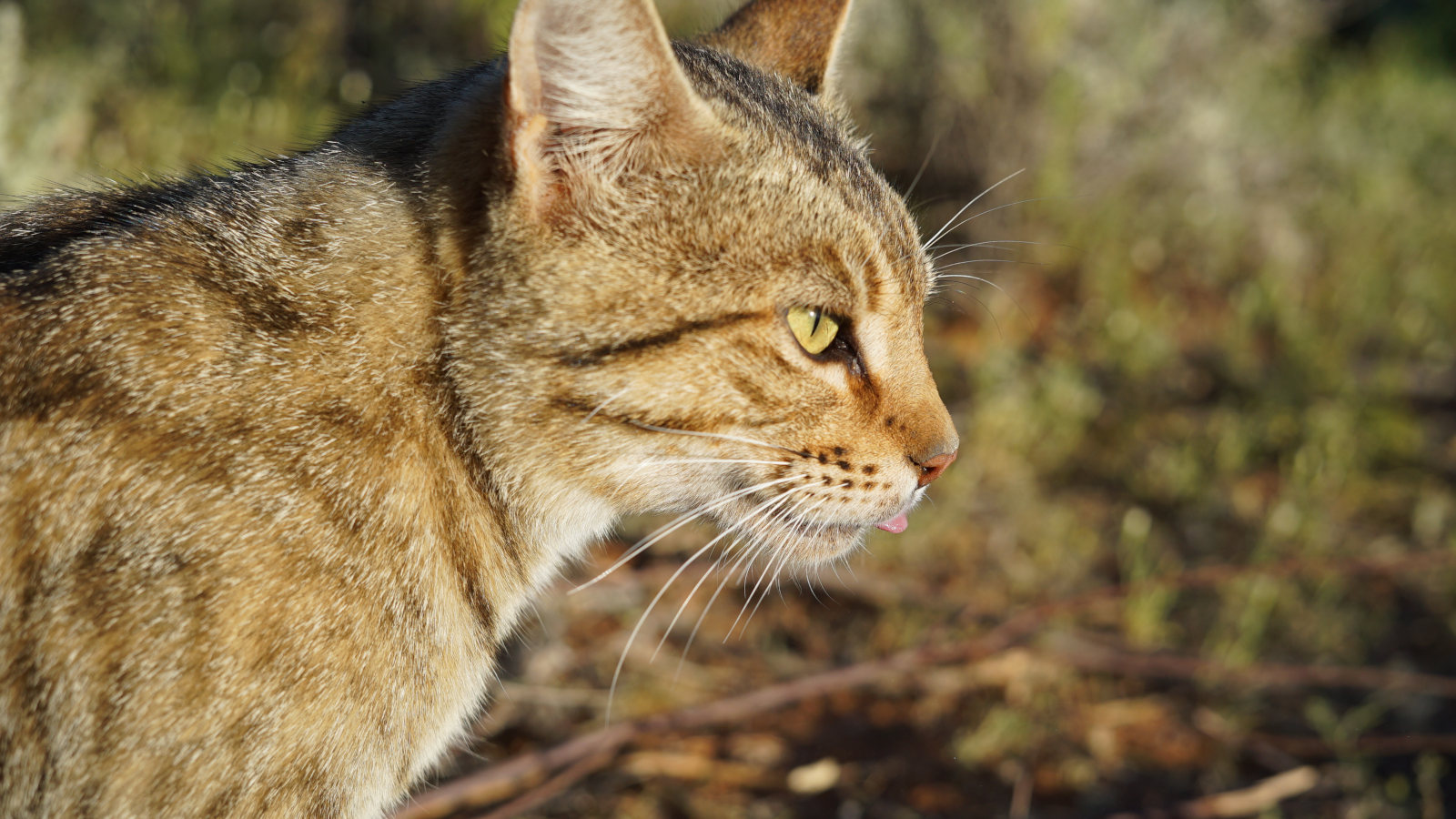Feral Cats
Feral cats are genetically indistinguishable from domestic cats. Their intelligence, varied diet and expert hunting strategies make them a fierce and deadly predator

Since European colonisation, Australia has lost 33 mammal species, the highest rate of mammal extinctions in the world. Cats have played a major role in most of these extinctions and continue to threaten an additional 120 mammal species
Domestic cats (Felis catus) were initially brought to Australia by the earliest European settlers and then introduced to various colonies across the continent. While it took some time for them to venture beyond human settlements, their populations gradually expanded from major cities, eventually covering about 99% of the country by 1910. With a population ranging from 2.1 to 6.3 million, feral cats have adapted to survive in all types of Australian habitats. Typically, there is an average of one cat per every five km, with higher concentrations in areas abundant in food sources, such as off-shore islands, urban areas, and post-rain desert regions.
Are domestic cats the same as feral cats?
Genetically, feral cats are identical to domestic cats, yet they may seem distinct. Feral cats typically exhibit basic coat patterns like tabby or black, as more elaborate patterns are not conducive to survival in the wild. For instance, cats with excessive white fur would be more vulnerable to predators like dingoes. Also, many of the unique features of domestic cats are derived from recessive genes, and are bred out quickly in the wild.
Feral cats are not inherently bigger than domestic house cats. The average weighs are between 3-5 kg. However, as male feral cats are not de-sexed, many can grow into gigantic tom-cats. Such cats can be almost as big as a small dingo. These large cats are rare; in the past 30 years, fewer than 1% of the cats caught in the regions have weighed over 7 kg.
What has Arid Recovery learnt?
Fenced havens unintentionally attract cats
The predator-proof fence around the Arid Recovery reserve has helped many native species thrive, including two types of native rodents that have spread into the surrounding area. Cats seem to notice when prey move through the fence, as their activity along the fence line increased when the number of rodents inside the reserve grew. This reduces the ability of reserves to act as areas where animals can repopulate neighboring landscapes and puts more pressure on populations of other species living on the edges of the reserve. Consequently, Arid Recovery manages feral cat populations around the reserve to alleviate pressure on the fence and surrounding wildlife.-1600x950.jpg?lang=en-AU) Caught on camera: the fence attracks feral cats
Caught on camera: the fence attracks feral cats
Big male cats eat large native prey
We studied nearly 1,750 feral cats in arid Australia over 30 years to understand their eating habits. Feral cats eat a variety of things like reptiles, mammals, birds, and insects. We found that the bigger the cat, the bigger the prey it goes after. For example, cats weighing approximately 3 kg tend to hunt smaller prey (under 50 g), while those weighing 6 kg target prey over 500 g. Our studies show that if there are more big male cats around, the chances of larger prey getting eaten increases. On average, large male cats made up 23% of the population in the area. By focusing on feral predators of specific sizes, we can significantly enhance our management strategies, especially in safeguarding various sizes of native wildlife.